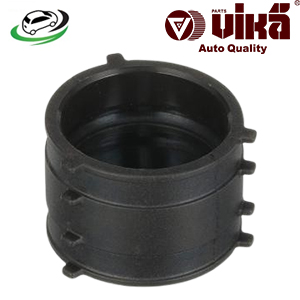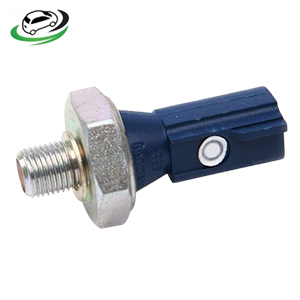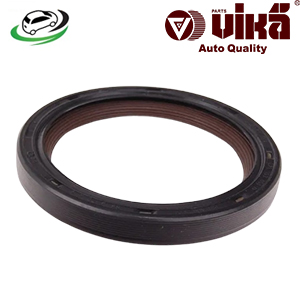-20%
Get Front Crankshaft Seal Audi B6 S4 V8/ C5 Allroad Quattro 4.2L/ Q7 TDI/ RS7 4.0T/ VW Touareg 2/3 V6 TDI 079103051D
The crankshaft seal is a critical component in an engine’s sealing system, designed to prevent oil and other fluids from leaking out of the engine. It plays a crucial role in maintaining engine performance, preventing contamination, and ensuring longevity. Understanding its function, types, benefits, signs of failure, and maintenance can help you ensure your engine operates smoothly and efficiently.
What is a Crankshaft Seal?
The crankshaft seal, also known as the crankshaft oil seal, is a sealing device that fits around the crankshaft, which is the main rotating shaft in an engine. Its primary function is to keep engine oil contained within the engine and prevent external contaminants from entering. The seal is located at the front and rear of the crankshaft, where it exits the engine block and connects to various engine components.
Components of the Crankshaft Seal
- Seal Housing: The outer casing of the seal that fits into the engine block or timing cover.
- Seal Lip: The flexible, rubber-like edge that creates a tight seal around the crankshaft to prevent leaks.
- Spring: A metal spring or band that keeps the seal lip in constant contact with the crankshaft, ensuring a tight seal.
- Crankshaft Surface: The part of the crankshaft that the seal lip contacts, typically smooth and machined to ensure proper sealing.
Function of the Crankshaft Seal
The crankshaft seal serves several critical functions in the engine’s operation. Here’s a breakdown of its key roles:
Key Functions
- Prevents Oil Leaks: The primary function of the crankshaft seal is to prevent engine oil from leaking out of the engine. Oil is essential for lubricating the crankshaft and other engine components, so keeping it contained is crucial for proper engine function.
- Keeps Contaminants Out: The seal also prevents dirt, dust, and other contaminants from entering the engine. Contaminants can cause damage to internal components, leading to decreased performance and potential engine failure.
- Maintains Engine Pressure: By preventing oil leaks, the crankshaft seal helps maintain the correct internal pressure within the engine. Proper pressure is necessary for efficient combustion and optimal engine performance.
- Supports Engine Efficiency: A properly functioning crankshaft seal ensures that the engine operates efficiently by maintaining proper lubrication and reducing the risk of contamination.
Types of Crankshaft Seals
Crankshaft seals come in various types and materials, each designed to meet specific performance and durability requirements. Understanding the different types can help you choose the right seal for your vehicle.
Common Types
- Rubber Seals: Made from rubber compounds, these seals are flexible and provide a good seal against the crankshaft. They are commonly used in standard applications.
- Metal-Rubber Seals: These seals have a metal outer casing with a rubber lip. The metal provides added strength and durability, while the rubber lip ensures a tight seal. They are often used in high-performance or heavy-duty applications.
- Composite Seals: Made from a combination of materials, including rubber and synthetic compounds, composite seals offer enhanced durability and resistance to high temperatures and pressures.
- Lip Seals: Featuring a single or double lip design, lip seals provide an effective barrier against oil leaks and contaminants. They are commonly used in various engine applications.
Benefits of the Crankshaft Seal
The crankshaft seal provides several benefits that are essential for maintaining engine performance and longevity. Here’s a look at the key advantages:
Improved Engine Performance
- Prevents Oil Leaks: By keeping engine oil contained, the crankshaft seal ensures that the crankshaft and other engine components are properly lubricated, which is crucial for smooth engine operation and optimal performance.
- Maintains Proper Pressure: The seal helps maintain the correct internal pressure within the engine, which is necessary for efficient combustion and overall engine efficiency.
Enhanced Engine Longevity
- Reduces Contamination: By preventing external contaminants from entering the engine, the crankshaft seal helps protect internal components from wear and damage, extending the engine’s lifespan.
- Prevents Premature Wear: Proper sealing prevents oil leaks and contamination, reducing the risk of premature wear on engine components and ensuring long-term reliability.
Cost Savings
- Avoids Expensive Repairs: By preventing oil leaks and contamination, the crankshaft seal helps avoid costly repairs and replacements of damaged engine components.
- Reduces Maintenance Costs: A well-functioning crankshaft seal minimizes the need for frequent maintenance and repairs, saving time and money.
Signs of a Faulty Crankshaft Seal
A faulty crankshaft seal can lead to various engine issues, including oil leaks and performance problems. Recognizing the signs of a damaged or failing seal is crucial for timely repairs and maintaining engine efficiency.
Common Symptoms of a Faulty Seal
- Oil Leaks: One of the most common signs of a faulty crankshaft seal is visible oil leaks around the front or rear of the engine. Leaks can lead to low oil levels and potential engine damage.
- Engine Smoke: Oil leaking from the seal can come into contact with hot engine components, causing smoke to rise from the engine bay. This can be a visible sign of a leaking seal.
- Reduced Engine Performance: A faulty seal can lead to a drop in engine performance, including reduced power, acceleration, and overall efficiency.
- Engine Noise: Leaks or contamination caused by a faulty seal can lead to unusual engine noises, such as knocking or ticking sounds.
- Oil Pressure Warning Light: A drop in oil pressure caused by a faulty seal can trigger the oil pressure warning light on the dashboard, indicating a potential problem with the seal.
Maintenance and Inspection of the Crankshaft Seal
Regular maintenance and inspection of the crankshaft seal are essential for ensuring its proper function and preventing potential issues.
Inspection Tips
- Visual Inspection: Periodically check for visible signs of oil leaks around the front and rear of the engine. Look for oil stains or puddles under the vehicle, which can indicate a leaking seal.
- Check for Engine Smoke: Observe the engine bay for any smoke or burning oil smells, which can be a sign of oil leaking from the seal and coming into contact with hot engine components.
- Monitor Engine Performance: Pay attention to any changes in engine performance, such as reduced power or unusual noises. These symptoms may indicate a problem with the crankshaft seal.
Maintenance Tips
- Keep the Seal Area Clean: Ensure that the area around the crankshaft seal is clean and free of debris. Dirt or contaminants can affect the seal’s performance and lead to leaks.
- Check Oil Levels Regularly: Regularly check the engine oil level and top up as needed. Low oil levels can indicate a leak and may be a sign of a faulty seal.
- Replace Worn Seals Promptly: If you notice any signs of a faulty crankshaft seal, such as oil leaks or reduced engine performance, replace the seal promptly to avoid further issues and potential engine damage.
Replacing the Crankshaft Seal
Replacing the crankshaft seal is a relatively straightforward process that can be done with basic tools. Here’s a step-by-step guide to help you through the replacement process.
Replacement Process
- Prepare the Vehicle: Ensure the engine is cool and the vehicle is parked on a level surface. Disconnect the battery to prevent electrical shorts.
- Remove Engine Components: Depending on the engine design, you may need to remove components such as the timing belt or chain, crankshaft pulley, and other parts that obstruct access to the crankshaft seal.
- Remove the Old Seal: Carefully remove the old crankshaft seal using a seal removal tool or a similar device. Be cautious not to damage the surrounding area.
- Install the New Seal: Position the new crankshaft seal in place and gently press it into the housing. Ensure that the seal is properly aligned and seated evenly.
- Reassemble Engine Components: Reinstall any components that were removed to access the seal. Ensure that all bolts and fasteners are tightened to the manufacturer’s specifications.
- Reconnect the Battery: Reconnect the battery terminals and ensure that all electrical connections are secure.
- Check for Leaks and Test the Engine: Start the engine and check for any leaks or unusual noises. Monitor engine performance to ensure that the new seal is functioning correctly.
- Inspect for Proper Installation: Verify that the seal is properly installed and aligned. Check for any signs of leaks or issues that may need to be addressed.
Follow us on Facebook for more parts.



